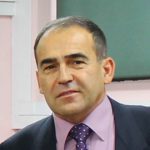
There are three research laboratories:
More important equipment: electrical machines of various types and power from 100 W to 350 kW, modern semiconductor converters of power up to 350 kW, programmable logic controllers (PLC), measuring equipment (instruments, oscilloscopes, thermal imaging camera, surge voltage generator, sensors of electrical and non-electrical quantities , devices for measuring torque and rotational speed), microprocessor systems, components for semiconductor converters (IGBT transistors, chokes, capacitors, electronic boards of various purposes, buses)
n/a
In the next one-year period, it is planned to implement and optimize control algorithms for various types of hybrid semiconductor energy converters in photovoltaic power plants. In doing so, cooperation will be established with the company RENS d.o.o. from Split, which plans to design and build some commercial photovoltaic power plants, where the developed algorithms would be applied.
For the company GEPPERT ELECTRIC d.o.o. from Split, the development of a static excitation system for hydrogenerators is being agreed upon. Such a system is based on the use of microprocessor-controlled thyristor or transistor converters. Prof. Marin Despalatović, PhD will be engaged in this project.
Prof. Božo Terzić, PhD is engaged in the development project “Microprocessor control system for crane electric motor drive with asynchronous slip-ring motor”. This project is being carried out in cooperation with FESB and the German company CEC GmbH.
Assist. prof. Goran Majić, PhD plans to continue research in the area of object localization in closed spaces based on Wi-Fi signal parameters in the coming year. The intention is to develop and test localization algorithms based on the application of neural networks. The emphasis will be on the application of algorithms in an industrial environment. It is expected that the results of the mentioned research will be published in one paper of the A category.